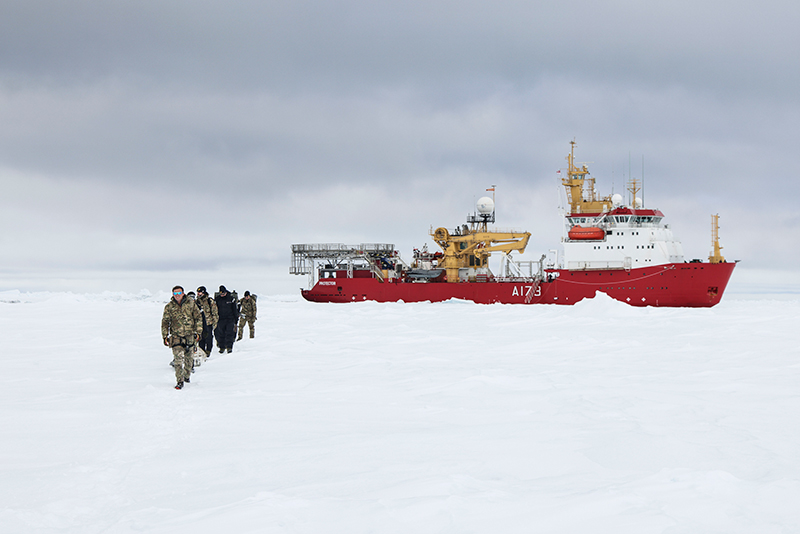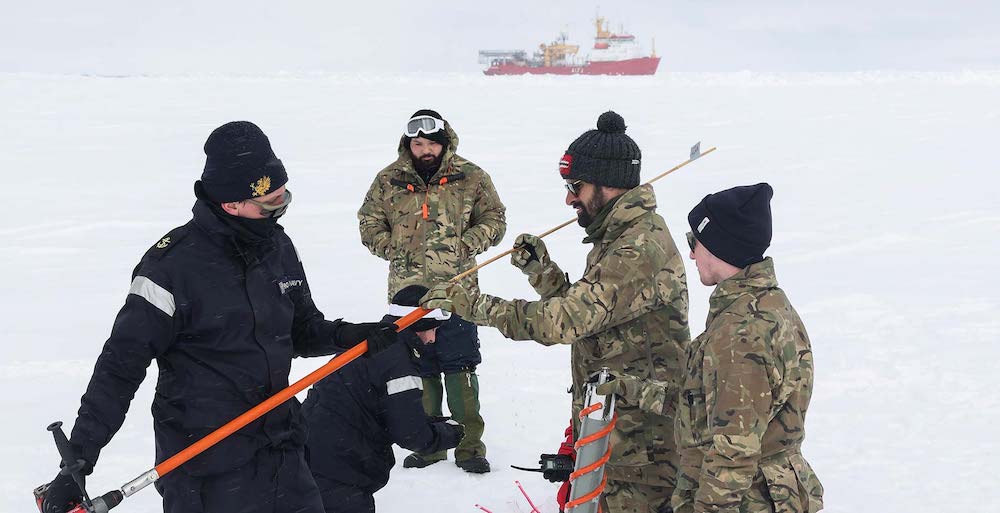A UK research vessel has set a new record for the Royal Navy’s northernmost surface voyage
The HMS Protector sailed to within 1,050 kilometers of the North Pole.

A British icebreaking survey ship has sailed further north than any other surface vessel in the history of the Royal Navy.
The HMS Protector reportedly reached a position of 80 degrees 41.5 minutes North in the Greenland Sea last month, bringing it to within 1,050 kilometers of the North Pole while conducting sea trials to test its icebreaking ability after a completing an extensive overhaul in January.
According to the U.K. defense ministry, the improvements made during the work mean that only Royal Navy submarines can sail further north than the Protector.
[In a new report, Britain reconsiders its Arctic military capabilities]
The Protector sails primarily in the Antarctic Ocean, but, in connection with the sea trials, the Royal Navy used the voyage to conduct Arctic training and conduct research.
“The chance to familiarize ourselves with this unforgiving environment has been fantastic, and reasserts the U.K.’s ability to operate in the Arctic,” Captain Michael Wood, the Protector’s commanding officer, said.
On board the ship to assist with the ice-breaking were two Royal Navy officers who earned ice-pilot qualifications this past winter while sailing aboard the Polar Star, the sole U.S. polar icebreaker, in the waters off Alaska. A U.S. Coast Guard officer specializing in icebreaking was also aboard the Protector.

During the voyage, the Royal Marines led daily patrols onto ice floes inhabited by polar bears to set up the trial ranges and take ice samples.
“The team adapted well to the Arctic,” said Chris Carlisle, a Royal Marine sergeant who led the patrols. “Within a week of sailing from Devonport the temperatures and conditions changed immeasurably. Everybody onboard proved they can safely do their job in the most extreme of environments.” (Devonport, in southwest England, is the ship’s home port.)
For the scientific portion of the voyage, the Protector conducted surveys of the sea bed in the Fram Strait, collected data about North Atlantic currents, observed marine mammals and helped the British Antarctic Survey with its work studying the polar ice cap.